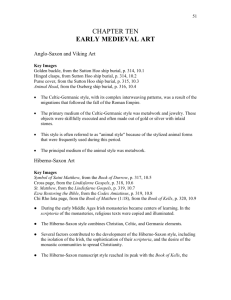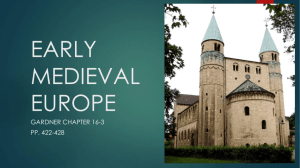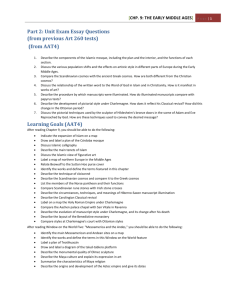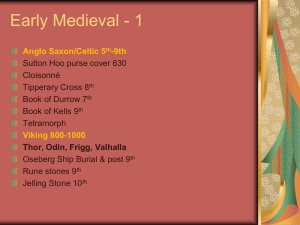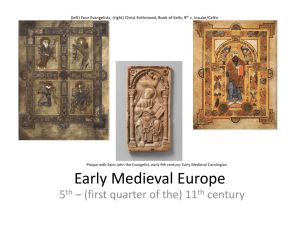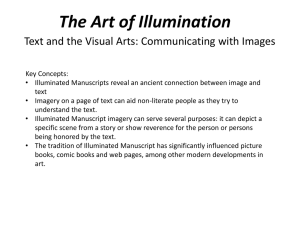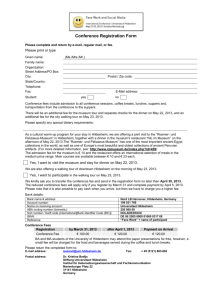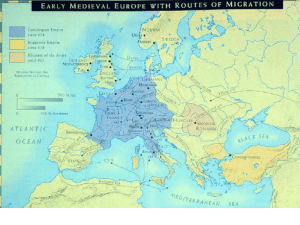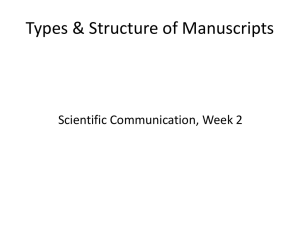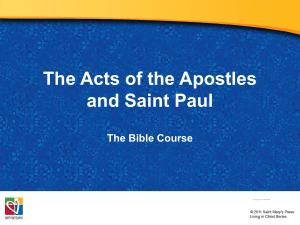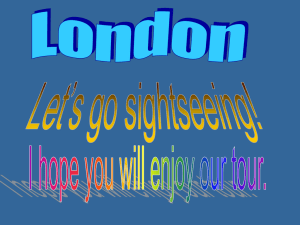Medieval Christian Monks
advertisement
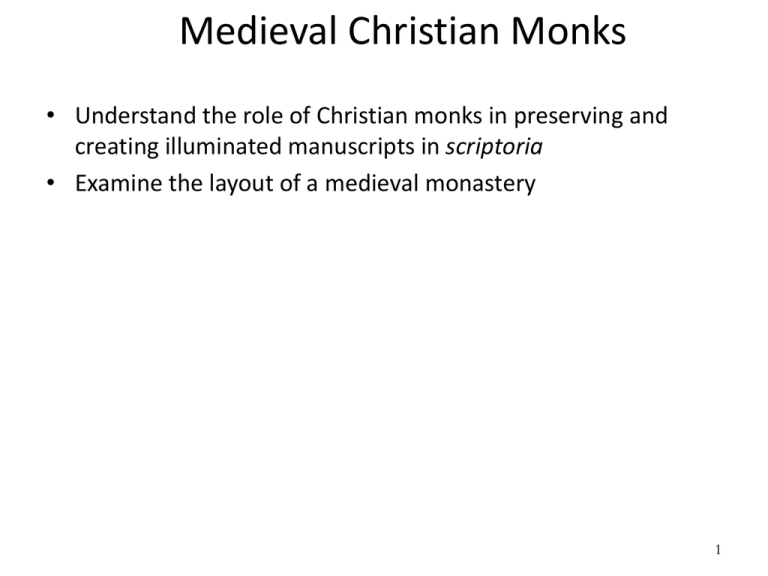
Medieval Christian Monks • Understand the role of Christian monks in preserving and creating illuminated manuscripts in scriptoria • Examine the layout of a medieval monastery 1 9th C. ms. And 20th C. model St. Gall, Switzerland 11-19B Abbey of Saint-Riquier, Centula, France, 790–799, in an engraving of 1612 after a lost 11thcentury manuscript illumination. 3 Figure 11-20 Westwork of the abbey church, Corvey, Germany, 873– 4 Abbey church of St. Pantaleon Cologne, Germany Torhalle (gatehouse) Lorsch, Germany 9th century Ottonian Art (10th century Germany) • Examine the architecture associated with the Ottonians, its formal origins and its later influence. • Understand the architectural and free standing sculptural traditions of the Ottonians. • Compare and contrast Ottonian and Carolingian art • Examine the styles of the Ottonian illuminated manuscripts. • Charlemagne’s ineffective grandsons divided the empire into three parts. • This caused the exponential growth of feudalism • Weakened Empire was left vulnerable to invasions. • German ruler, Otto I, married the Lombard king’s widow, ruled over much of Italy and was crowned emperor by the pope. – This led to years of continued conflict with the papacy and local 8 Architecture of the Ottonians • Examine the architecture, its formal origins and its later influence. 9 Figure 11-21 Nave of the church of Saint Cyriakus, Gernrode, 10 Figure 11-22 Saint Michael’s, Hildesheim, Germany, 1001– 1031. 11 Figure 11-23 Longitudi nal section (top) and plan (bottom) of the abbey 12 11-23A Nave (looking east) of Saint Michael’s, Hildesheim, 1001–1031. 13 Abbey Church of St. Michael’s Hildesheim, Germany ca. 1001-1031 Ottonian Sculpture • Understand the architectural sculpture associated with St. Michael’s at Hildesheim, Germany. • Examine the free standing sculptural traditions of the Ottonians. 15 Figure 11-24 Doors with relief panels (Genesis, left door; life of Christ, right door), commissioned by Bishop Bernward for Saint Michael’s, 16 11-25 God accusing Adam and Eve, detail of the left door of Saint Michael’s, Hildesheim, Germany, 1015. Bronze, 1’ 10 17 11-26 Otto I presenting Magdeburg Cathedral to Christ, from Magdeburg Cathedral, Magdeburg, Germany, 962– 968. Ivory, 5” X 4 1/2". Metropolitan 18 Figure 11-24A Column with reliefs illustrating the life of Christ, commissioned by Bishop Bernward for Saint Michael’s, 19 11-27 Christ blessing Otto II and Theophanu, 972–973. Ivory, 7 1/8” X 4”. Musée National du Moyen Age, 20 Gero for Cologne Cathedral, Germany, ca. 970. Painted wood, height of figure 6’ 2”. Cathedral, Cologne. 21 Ottonian Illuminated Manuscripts • Examine the appearance of the Ottonian illuminated manuscripts. • Notice the golden backgrounds and linear figural styles in Ottonian illuminated manuscripts --- Ottonian leaders developed significant contacts with the Byzantine empire. 22 Figure 1129 Otto III enthroned, folio 24 recto of the Gospel Book of Otto III, from Reichenau, Germany, 23 Figure 11-30 Annunciation to the Shepherds, folio in the Lectionary of Henry II, from Reichenau, Germany, 24 11-31 Abbess Uta dedicating her codex to the Virgin, folio 2 recto of the Uta Codex, from Regensburg, Germany, ca. 1025. Tempera on parchment, 9 5/8” X 25 11-29A Jesus washing the feet of Saint Peter, folio 237 recto of the Gospel Book of Otto III, 997– 1000. Tempera on vellum, 1’ 1” X 9 3/8”. Bayerische 26 Discussion Questions In what ways did medieval European art and architecture depart from classical Roman art and architecture? Did any of the civilizations retain characteristics of Roman art and architecture? Explain. Compare the three major manuscript styles that developed in the Middle Ages. What previous styles of art influenced medieval European art? 27
